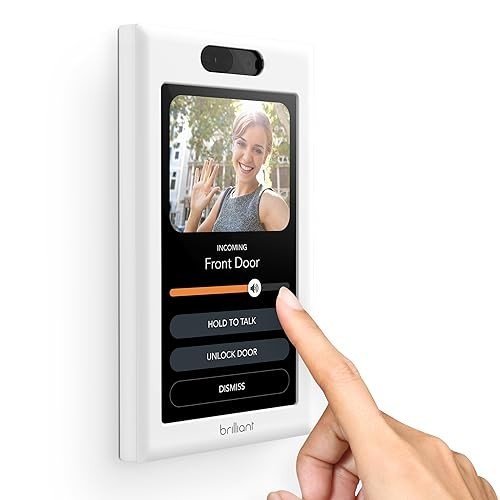Buy Smart Lighting in the UK: A Comprehensive Guide
Over the last few years, smart lighting has actually revolutionised the way we illuminate our homes and offices. As Industrial Lamps UK , LED and smart lighting choices are ending up being significantly popular in the UK. This short article aims to offer an in-depth overview of the benefits, types, installation, and buying pointers for smart lighting in the UK.
What is Smart Lighting?
Smart lighting refers to lighting systems that can be controlled from another location through a smartphone, tablet, or smart home center. Compatible with different smart home ecosystems like Amazon Alexa, Google Assistant, and Apple HomeKit, smart lighting offers users boosted performance and convenience.
Secret Benefits of Smart Lighting
Energy Efficiency
- Lowered Energy Consumption: Smart bulbs are generally LED, consuming considerably less energy than traditional incandescent bulbs.
- Scheduling: Users can programme lights to switch off during the day when not required, saving electrical energy.
Remote Control
- Convenience: Smart lights can be controlled from anywhere, allowing users to change settings while away from home.
- Combination with Other Devices: Smart lighting typically incorporates with security systems, providing alerts and increased security.
Customisation
- Dimming Options: Many smart bulbs featured dimmable features that can adjust according to mood or requirement.
- Color Control: Smart lighting permits users to pick from countless colors and shades for numerous settings.
Environmental Impact
- Sustainability: Energy-efficient bulbs contribute to lowering carbon footprints, making them an environmentally friendly choice.
Types of Smart Lighting
1. Smart Bulbs
These bulbs can be screwed into existing light fittings and generally connect through Wi-Fi or Zigbee. Popular brands consist of Philips Hue and LIFX.
2. Smart LED Strips
Flexible and adhesive, LED strips can be placed under cabinets, along walls, or behind TVs to develop a modern ambiance.
3. Smart Fixtures
These complete lighting fixtures feature integrated smart technology and appropriate for direct installation into homes without requiring to change light bulbs.
4. Smart Outdoor Lighting
Designed particularly for outdoor usage, these lights use functions like weather condition resistance, customized schedules, and remote operation.
| Type of Smart Lighting | Secret Features | Best For |
|---|---|---|
| Smart Bulbs | Various colors, dimmable | Indoor use, versatile choices |
| Smart LED Strips | Adhesive, flexible design | Decorative ambient lighting |
| Smart Fixtures | Integrated smart technology | Direct replacements for old fixtures |
| Smart Outdoor Lights | Weatherproof, movement detect | Outdoor security and ambiance |
How to Install Smart Lighting
Setting up smart lighting is normally uncomplicated, particularly with smart bulbs. Here are some general steps:
- Choose Your Smart Lighting: Select the kind of smart lighting that best fits your requirements.
- Download the App: Most smart lighting features an application that guides the setup process and offers control functionalities.
- Change Existing Bulbs/Fixtures: If needed, eliminate existing bulbs or fixtures and change them with the smart ones.
- Connect to Wi-Fi: Open the smart lighting app and follow directions to connect your lights to your Wi-Fi network.
- Set up Settings: Set schedules, colour preferences, and any other customisation alternatives through the app.
Where to Buy Smart Lighting in the UK
Smart lighting is widely available in the UK, offering clients with a range of choices. Here are some leading merchants:
- Amazon UK: A huge selection of smart lighting brands and user reviews.
- Argos: Offers a variety of smart lighting options and bundled offers.
- B&Q:&Known for home improvement, they supply different smart lighting fixtures and bulbs.
- John Lewis: High-end options together with recommendations and warranties.
- IKEA: Offers affordable smart services that integrate well into modern home.
Tips for Buying Smart Lighting
1. Figure out Compatibility
Guarantee that the smart lighting you choose is suitable with the ecosystem you are using, such as Amazon Alexa or Google Home.
2. Look for Features
Look for features that match your choices, such as dimmability, color options, and scheduling abilities.
3. Read Reviews
Customer reviews can supply insights into efficiency and dependability.
4. Think About Smart Hub Integration
Some smart lighting might need a dedicated center for operation. Examine if this is required for your selected system.
5. Assess Energy Efficiency Ratings
Look for energy effectiveness ratings to ensure you are making an accountable purchase.
FAQs about Smart Lighting in the UK
- What is the average cost of smart lighting?The price can vary from ₤ 10 for basic smart bulbs to a number of hundred pounds for sophisticated smart fixtures.
- Can I set up smart lighting myself?Yes, most smart lighting systems are developed for simple setup and do not require expert support.
- Is smart lighting safe to use?Smart lighting is generally safe, but ensure to follow all maker standards during installation.
- What happens if the Wi-Fi heads out?Some smart lights have a backup mode that allows standard performance even without Wi-Fi. Nevertheless, full features will be not available up until connection is brought back.
- Are smart lights ideal for outdoor usage?Yes, there are specifically designed smart lights for outdoor conditions that are weather-resistant.
Smart lighting is not just a style improvement however also a step towards energy performance and benefit. With a large variety of alternatives readily available in the UK, it is simpler than ever for consumers to incorporate smart lighting into their homes. By understanding the types, setup procedures, and where to buy, people can make educated choices that best fit their requirements. Welcoming smart innovation now might lead to a brighter, more energy-efficient future.

